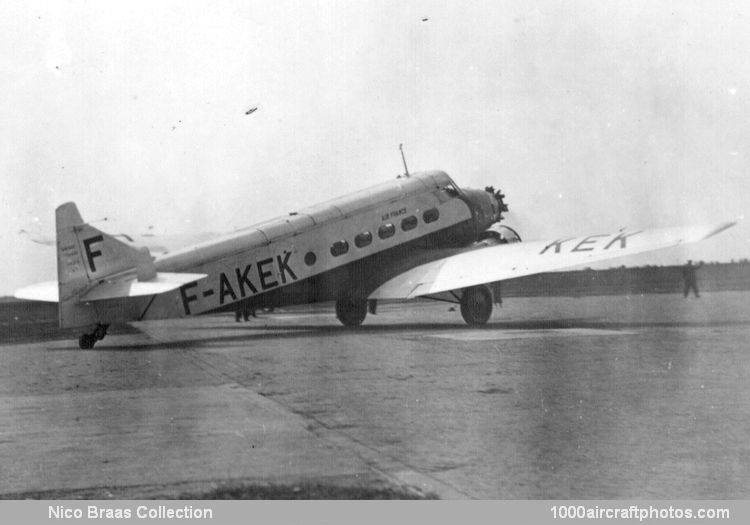Powered by three 300 hp Hispano-Suiza 9Qa nine-cylinder air-cooled radial engines and carrying the registration F-ADEK (which was soon altered to F-AKEK), a prototype was flown by test pilot Raoul Ribière in November 1930. It was designated 280.T10, the T10 indicating ten seats for two crew and eight passengers. A second prototype was shown statically at the Paris Salon between November 12 and December 14, 1930, this was designated 281.T10 and was fitted with 300 hp Gnome & Rhône Titan Major 7Kb engines. Both prototypes were purchased by the French government, and subjected to official acceptance trials in early 1931. Later the first prototype was re-engined with the Titan Major 7Kb engines. Both aircraft were subsequently loaned to Compagnie Internationale de Navigation Aérienne (CIDNA) in 1932.
In 1931 the Wibault concern had merged with Chantiers de Saint-Nazaire Penhoët to form Chantiers Aéronautiques Wibault-Penhoët at Paris. Subsequently a production batch of six aircraft was laid down, fitted with more powerful 350 hp Titan Major 7Kds engines these were designated 282.T12 and seated two crew and ten passengers. The main external difference with the 281.T10 was the addition of cowlings round the wing-mounted engines. Three aircraft were operated by Air Union under the fleet name la Voile d'Or (Golden Clipper), two went to Air Orient and one to CIDNA. In October 1933, these three companies merged into the newly formed Air France, which operated the six production aircraft, as were both prototypes, after being brought up to 282.T12 standard.
Under the designation 283.T12, Air France took delivery of ten additional aircraft between May and December 1934. These had increased fuel capacity, higher weights, streamlined pants fitted to the main landing gear, and Ratier propellers instead of the Gnome & Rhône 172 units used on the earlier versions and a cowling on the nose engine. While in service they were also fitted with a horn-balanced rudder of increased size, while the tail plane was strutted and fitted with auxiliary fins. These latter modifications were also fitted to earlier aircraft, like the above pictured first prototype. While in service with Air France the second prototype (F-AKEL) was experimentally fitted with a retractable landing gear.
By June 30, 1934, while production of the 283.T12 continued, the Wibault-Penhoët company was absorbed by Ateliers d'Aviation Louis Breguet, the aircraft being labelled Avion Wibault-Penhoët 283.T12, but the name Louis Breguet was added to the fin.
From August 1939 on, a number of aircraft were temporarily requisitioned by the French government.
|
Type |
C/n |
|
Reg. |
|
Remarks |
